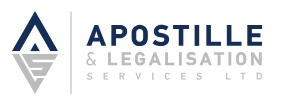Document Notarisation is the process of having a certified notary public authenticate the signature on a document to ensure its legitimacy and prevent fraud. The notary verifies the identity of the signer and ensures they are willingly and knowingly entering into the agreement. This process adds a layer of trust and credibility to legal documents, such as contracts, affidavits, and property deeds. The importance of document Notarisation lies in its ability to enhance the reliability of legal transactions, reduce the risk of disputes, and contribute to the overall integrity of the legal system.
What Are the Key Steps in Document Notarisation?
The key steps in document Notarisation typically involve the following:
- Identification: The signer must provide valid identification to the notary public.
- Confirmation of Understanding: The notary ensures that the signer comprehends the content and implications of the document.
- Signing in the Notary's Presence: The signer signs the document in the presence of the notary.
- Notary's Seal and Signature: The notary affixes their official seal and signature to the document.
- Record Keeping: The notary maintains a journal of notarial acts for future reference.
These steps help guarantee the authenticity of the document and the willingness of the parties involved.
What Types of Documents Require Notarisation?
Various documents may require Notarisation, including:
- Real Estate Documents: Deeds, mortgages, and property transfer documents.
- Legal Agreements: Contracts, affidavits, and power of attorney documents.
- Financial Documents: Loan agreements, promissory notes, and financial affidavits.
- Government Forms: Certain government forms and applications.
- Estate Planning Documents: Wills and trusts.
The specific requirements may vary by jurisdiction, and Notarisation is often necessary for documents that involve legal commitments or significant financial transactions.
What Role Does a Notary Public Play in Document Notarisation?
A notary public serves as an impartial witness in the Notarisation process. Their primary roles include:
- Verifying Identity: Confirming the identity of the signer.
- Ensuring Willingness: Confirming that the signer is willingly and knowingly entering into the agreement.
- Preventing Fraud: Deterring fraudulent activities by authenticating signatures.
- Applying Official Seal: Affixing their official seal and signature to the document.
A notary's role is crucial in maintaining the integrity and legality of the documents they notarize.
What Technologies Are Used for Secure Document Verification?
Secure document verification leverages various technologies, including:
- Biometric Authentication: Fingerprints, facial recognition, or iris scans.
- Blockchain Technology: Creating tamper-proof, decentralized ledgers.
- Digital Signatures: Cryptographically secure electronic signatures.
- Document Watermarking: Embedding invisible identifiers to verify authenticity.
These technologies enhance the security and reliability of document verification processes.
What Are the Common Challenges in Document Verification Processes?
Common challenges in document verification include:
- Forgery: Attempts to replicate signatures or alter documents.
- Identity Theft: Fraudulent use of someone else's identity for verification.
- Technological Vulnerabilities: Risks associated with digital document verification methods.
- Cross-Border Issues: Differing standards and requirements in international transactions.
Addressing these challenges requires robust security measures and constant adaptation to evolving technologies.
What Measures Ensure the Integrity of Document Verification?
Several measures contribute to the integrity of document verification:
- Encryption: Protecting data from unauthorized access during transmission.
- Multi-Factor Authentication: Using multiple verification methods for enhanced security.
- Regular Audits: Periodic reviews and audits of verification processes.
- Legal Standards and Compliance: Adherence to legal and industry standards for document verification.
Implementing these measures helps maintain the integrity and reliability of document verification processes in various contexts.


No comments yet